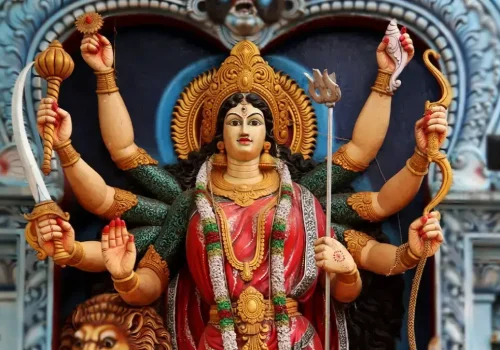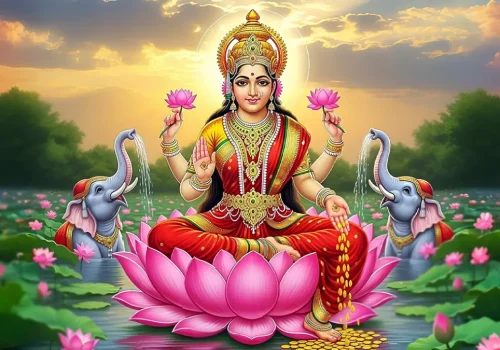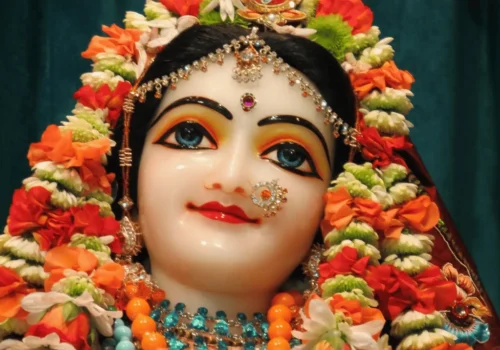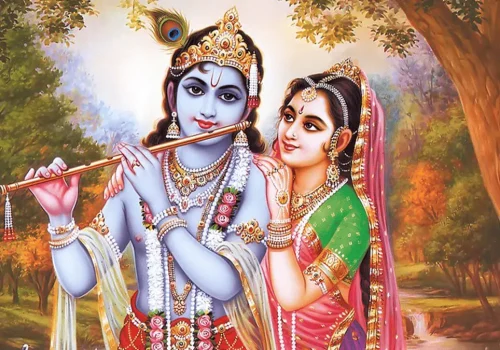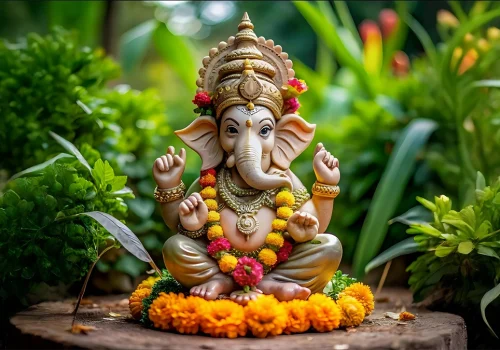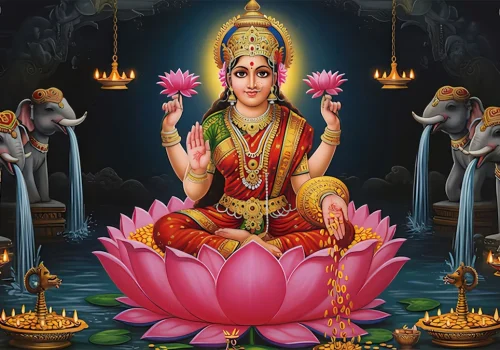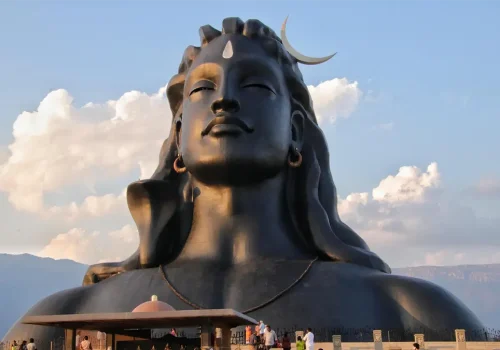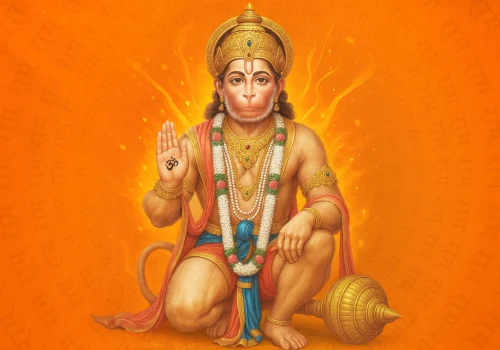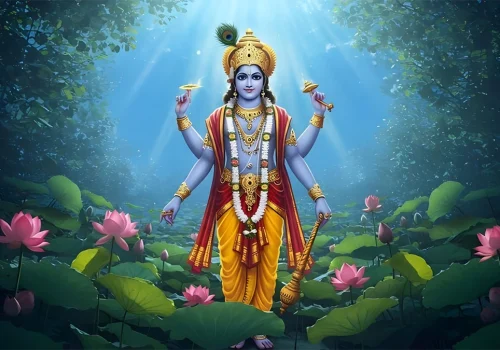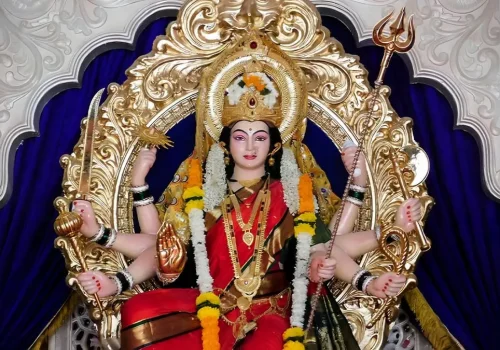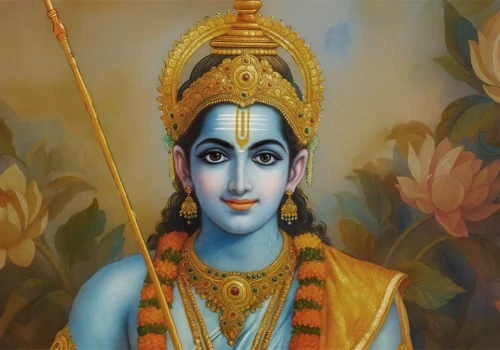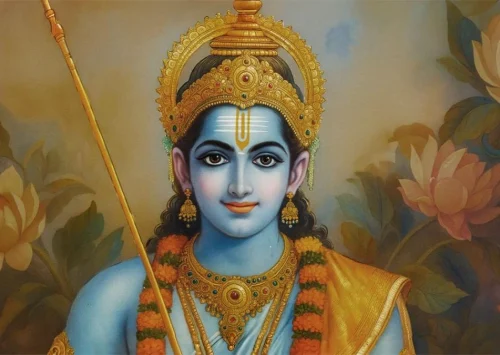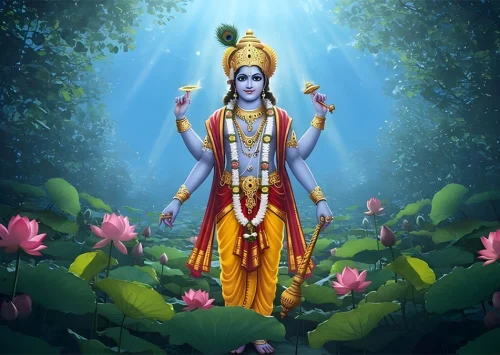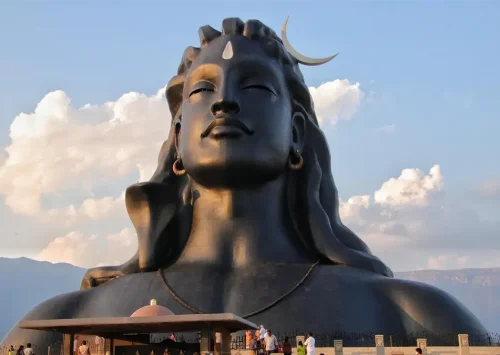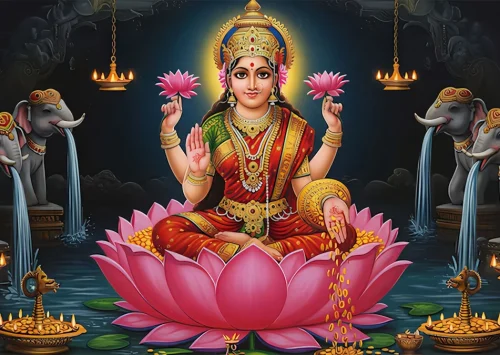Aarti of Durga Maa: जय अम्बे गौरी, मैया जय श्यामा गौरी। तुमको निशदिन ध्यावत, हरि ब्रह्मा… The Aarti of Durga Maa, often remembered as “Jai Ambe Gauri”, is a hymn sung in praise of the Goddess. Devotees chant these Jai Ambe Gauri Lyrics it with faith to show their love for the Divine Mother and to request her protection, strength, and blessings, especially during Navratri and Durga Puja.
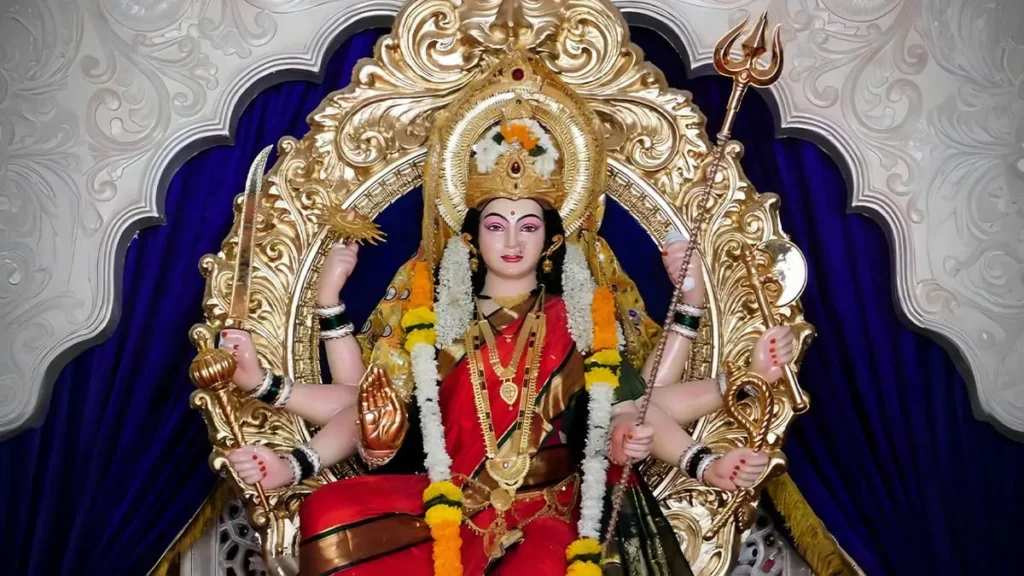
Aarti of Durga Maa (Jai Ambe Gauri Lyrics in Hindi)
जय अम्बे गौरी, मैया जय श्यामा गौरी।
तुमको निशदिन ध्यावत, हरि ब्रह्मा शिवरी।।
ॐ जय अम्बे गौरी…..
मांग सिंदूर बिराजत, टीको मृगमद को।
उज्ज्वल से दोउ नैना, चंद्रबदन नीको।।
ॐ जय अम्बे गौरी…..
कनक समान कलेवर, रक्ताम्बर राजै।
रक्तपुष्प गल माला, कंठन पर साजै।।
ॐ जय अम्बे गौरी…..
केहरि वाहन राजत, खड्ग खप्परधारी।
सुर-नर मुनिजन सेवत, तिनके दुःखहारी।।
ॐ जय अम्बे गौरी…..
कानन कुण्डल शोभित, नासाग्रे मोती।
कोटिक चंद्र दिवाकर, राजत समज्योति।।
ॐ जय अम्बे गौरी…..
शुम्भ निशुम्भ बिडारे, महिषासुर घाती।
धूम्र विलोचन नैना, निशिदिन मदमाती।।
ॐ जय अम्बे गौरी…..
चण्ड-मुण्ड संहारे, शौणित बीज हरे।
मधु कैटभ दोउ मारे, सुर भयहीन करे।।
ॐ जय अम्बे गौरी…..
ब्रह्माणी, रुद्राणी, तुम कमला रानी।
आगम निगम बखानी, तुम शिव पटरानी।।
ॐ जय अम्बे गौरी…..
चौंसठ योगिनि मंगल गावैं, नृत्य करत भैरू।
बाजत ताल मृदंगा, अरू बाजत डमरू।।
ॐ जय अम्बे गौरी…..
तुम ही जग की माता, तुम ही हो भरता।
भक्तन की दुःख हरता, सुख सम्पत्ति करता।।
ॐ जय अम्बे गौरी…..
भुजा चार अति शोभित, खड्ग खप्परधारी।
मनवांछित फल पावत, सेवत नर नारी।।
ॐ जय अम्बे गौरी…..
कंचन थाल विराजत, अगर कपूर बाती।
श्री मालकेतु में राजत, कोटि रतन ज्योति।।
ॐ जय अम्बे गौरी…..
अम्बेजी की आरती जो कोई नर गावै।
कहत शिवानंद स्वामी, सुख-सम्पत्ति पावै।।
ॐ जय अम्बे गौरी…..
Meaning of Jai Ambe Gauri Lyrics
The Aarti of Durga Maa beautifully describes her divine form, powers, and the blessings she offers her devotees. Words like सिंदूर (vermilion) and टीका (sacred mark) symbolize purity and auspiciousness. They highlight the goddess’s role as a mother and protector. Her रक्ताम्बर (red attire) and माला (garland of flowers) of red flowers represent power, energy, and devotion. The mention of her केहरि वाहन (lion as her vehicle) represents courage and fearlessness. Weapons like खड्ग (sword) and खप्पर (skull bowl) showcase the destruction of negativity and the protection of the righteous. Names of demons such as महिषासुर, शुंभ-निशुंभ, and चंड-मुंड remind us of her role as the destroyer of evil. At the same time, the goddess is praised as जग की माता (Mother of the Universe), the one who nurtures, removes sorrows, and grants happiness and prosperity.
In this way, this Aarti of Durga Maa serves as more than just a song of praise. It reminds us of Maa Durga’s strength, kindness, and spiritual presence in our lives.
Know more about Durga Maa
Learn about the stories, forms, and aarti of Durga Maa through these frequently asked questions
The nine forms of Goddess Durga, known as Navadurga, are worshipped during the festival of Navratri. Each form represents a unique quality of the goddess and guides devotees through different stages of life—from innocence to wisdom.Here are the nine forms of Maa Durga:
- Maa Shailaputri – The daughter of the mountains, symbolizing strength, devotion, and determination.
- Maa Brahmacharini – The goddess of deep penance and devotion, embodying unwavering discipline and spiritual faith.
- Maa Chandraghanta – Known for her fierceness, she protects devotees from evil and symbolizes courage.
- Maa Kushmanda – Known as the creator of the universe, she is also called the goddess of the cosmic egg, radiating light and energy to the world.
- Maa Skandamata – The mother of Lord Skanda (Kartikeya), symbolizing nurturing love, care, and compassion.
- Maa Katyayani – A powerful form of Durga, worshipped for strength and victory over negativity.
- Maa Kalaratri – A fierce and fearless form, destroying darkness and spreading auspiciousness.
- Maa Mahagauri – A serene and luminous form of the goddess, representing purity, tranquility, and divine grace.
- Maa Siddhidatri – The divine giver of wisdom, spiritual knowledge, and supernatural powers.
Through her nine forms, Maa Durga blesses her devotees with courage, purity, and spiritual growth.
It is believed that a fierce lion once saw Goddess Parvati meditating and planned to attack her. However, when Mata looked at him with motherly love and devotion, she changed him into her loyal follower. Later Lord Shiva named him Somnandi. While she continued her meditation for many years, Somnandi stayed nearby and faithfully protected her.
Some also believe that Somnandi was either a gift from her father, Himavan, or a defeated demon given to her by her son, Kartikeya.
Mata Durga was not born in the usual way. She is believed to be a form of Goddess Parvati, who took a fierce and mighty appearance to destroy the demon Mahishasura.To aid her in this significant battle, the gods gave her their divine weapons. Shiva gave his trident, Vishnu his discus, Indra his thunderbolt, Vayu his bow and arrows, Agni his spear, and other gods also offered their weapons. These gifts adorned her ten arms, making her the ultimate symbol of Shakti (divine energy).
This fierce battle went on for nine straight days and nights, which we now celebrate as Navratri. During these nine days, devotees honour the nine forms of Maa Durga (Navadurga), each representing different qualities such as devotion, courage, wisdom, or strength. The tenth day, also known as Dussehra or Vijayadashami, we celebrate Maa Durga’s victory over Mahishasura. This victory serves as a lasting reminder that good always wins over evil.
Maa Durga and Maa Kali are both forms of the Supreme Goddess, Shakti, each serving their own divine purpose. Durga symbolizes courage, safety, and a perfect balance of power. Kali represents the fierce, destructive energy that completely destroys evil.
Goddess Durga is often depicted with ten arms, although she can also appear with eight or more. The ten-armed form is the most recognized. It symbolizing her power over the ten directions: north, south, east, west, northeast, northwest, southeast, southwest, above, and below. Each arm holds a weapon or mudra, which has its own special meaning. This reflects her divine abilities and total control over the universe.
There are four Navratris each year: Chaitra Navratri, Sharad Navratri, and two Gupt Navratris, Magha and Ashadha. People celebrate Chaitra and Sharad Navratris widely with lively dances, gatherings, and community events. In contrast, the Gupt Navratris, Magha and Ashadha, are observed more privately. These periods focus on personal spiritual growth through meditation, fasting, and other devotional practices.
Durga Maa is called Jagat Janani, meaning Mother of the Universe, because she is seen as the first and supreme divine power (Adi Shakti). From her, all creation, including the gods, takes form and continues to exist. She is worshipped as the creator, protector, and destroyer of the world, which is why she is lovingly known as Jagadamba, the mother of all. This divine truth is also beautifully praised in the Aarti of Durga Maa, where devotees call upon her as the benevolent mother who nurtures and protects the entire universe.
Related Posts
- All Posts
- Aarti
- Chalisa
- Stotram
- Stuti
- Back
- Shiva
- Hanuman
- Shri Radha
- Durga
- Lakshmi
- Back
- Ganesh Ji
- Maha Lakshmi
- Lord Vishnu
- Durga Maa
- Back
- Shri Radha
- Back
- Shri Ram
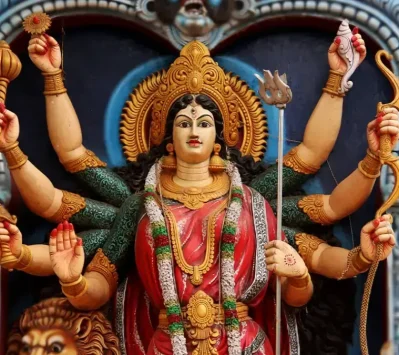
Durga Mata Chalisa -नमो नमो दुर्गे सुख करनी। नमो नमो दुर्गे दुःख हरनी॥ maa durga chalisa एक दिव्य स्तुति है...
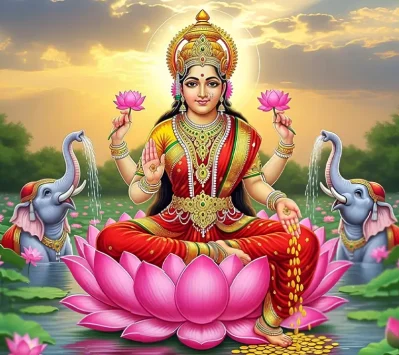
Lakshmi Ji Ki Aarti एक पवित्र स्तुति है जिसमें माँ लक्ष्मी की आराधना की जाती है। Om Jai Lakshmi Mata...
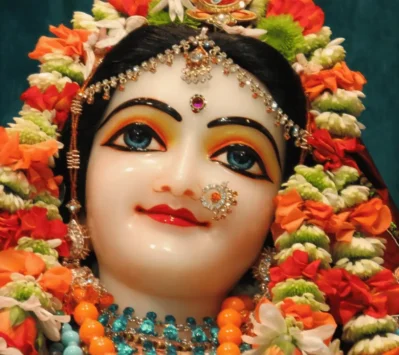
Radha Chalisa- जय वृषभानु कुँवरी श्री श्यामा।कीरति नंदिनी शोभा धामा । नित्य बिहारिनी श्याम अधारा।अमित मोद मंगल दातारा । भक्ति...

